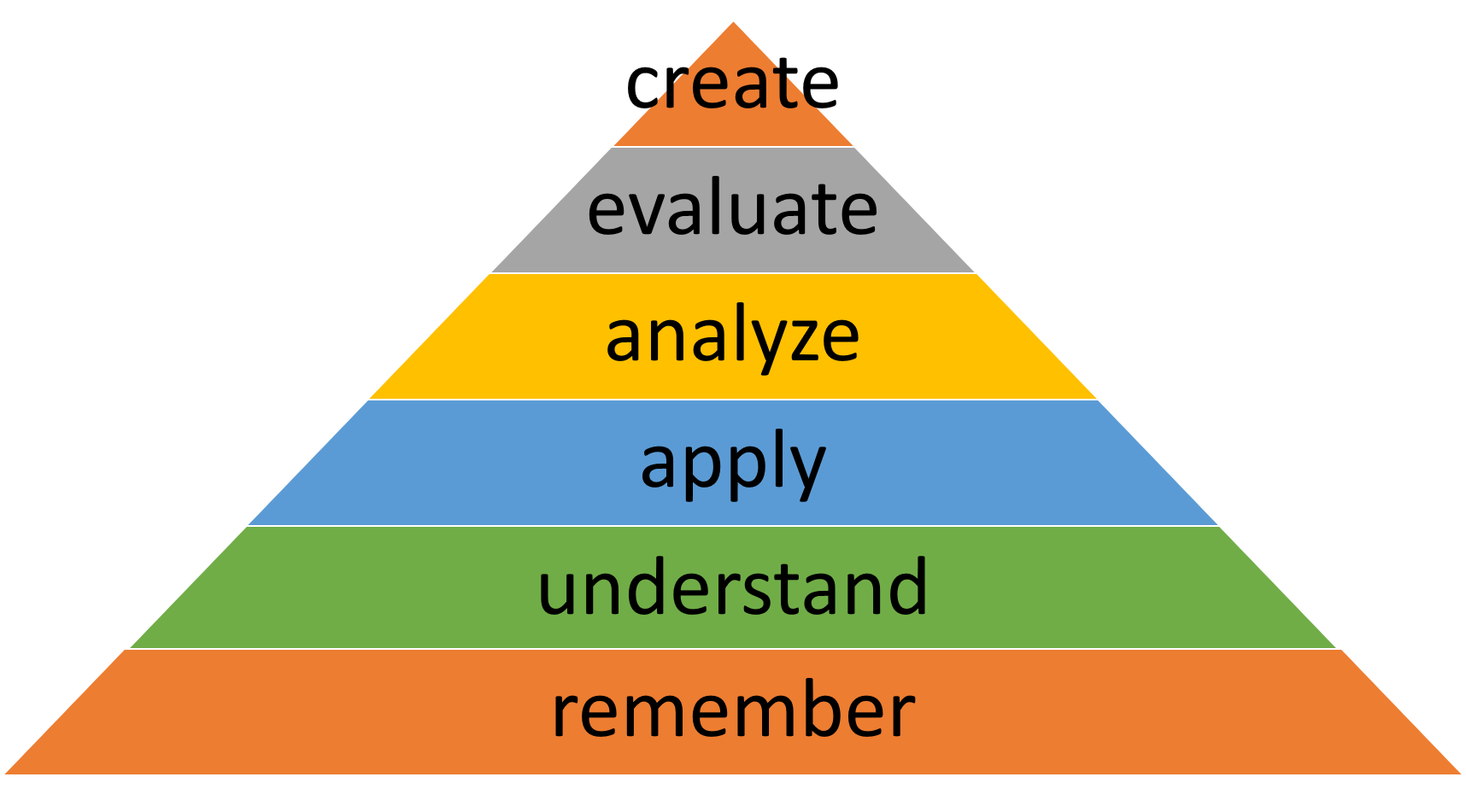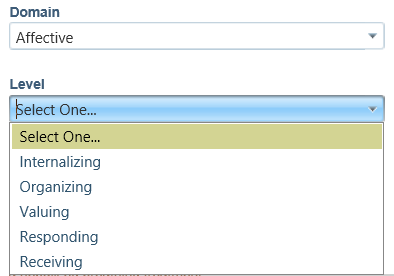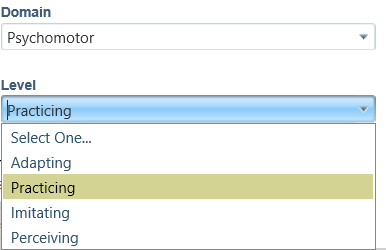Curriculum Outcome Therapy
Your competencies may not need to see a therapist, but chances are they could benefit from a quick analysis using Bloom’s cognitive levels. The advantages of analyzing include:
- You clarify your intent
- You determine if competencies are had a high enough or low enough level
- You get clues about sequencing your competencies
- You have direction for choosing evaluation strategies
You consider the full range of possible learning outcomes.
Take a look at student learning outcomes in your courses and compare them to the cognitive domain levels below. For a low-level course, you might weigh in with many competencies at the remembering and understanding levels. For a higher level course, you’ll want to bring in the higher order thinking skills of analyzing, evaluating and creating.
- Remembering – Requires learners to recall previously learned material. Use verbs such as: list, identify, name, state, define, record, etc.

- Understanding – Requires learners to grasp the meaning of material. Use verbs such as: discuss, explain, describe, summarize, etc.
- Applying – Requires learners to use learned material in new and concrete situations. Use verbs such as: demonstrate, apply, use, produce, solve, interpret, etc.
- Analyzing – Requires learners to break down material in to component parts and describe relationships. Use verbs such as: compare, differentiate, examine, relate, etc.
- Evaluating – Requires learners to judge or assess material based on clearly defined criteria. Use verbs such as: justify, assess, select, rate, etc.
- Creating – Requires learners to put together new material. Use verbs such as: develop, compose, design, revise, etc.
If your content includes skills in the psychomotor or affective domain, use the same analysis. WIDS give you easy ways to select your domains and levels.


Read more:
2286